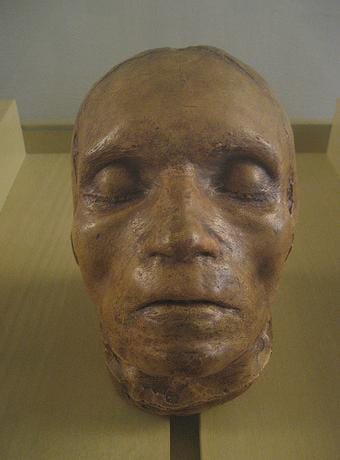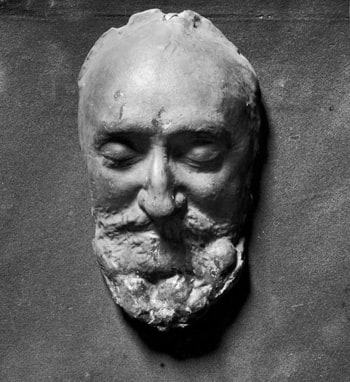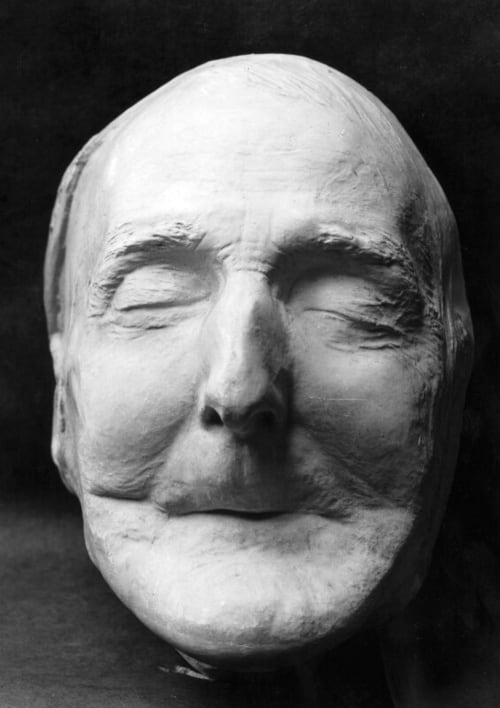Historical Faces (Death Masks)
Sort by:
Showing 39 items
Rating:
List Type:
c. 1265 - September 1321 (aged c. 56)
4 January 1643 - 31 March 1727 (aged 84)
Reputedly taken after post mortem by Josef Dannhauser. Beethoven suffered from ill health throughout the later stages of his life and the comparison with his life mask, taken in 1812, is startling.


Beethoven's Life Mask

Death mask of the greatest Electrical Engineer ever can be viewed at the Nikola Tesla museum in Belgrade, Serbia.




Taken by British intelligence officials as a proof of his death after he bit into a cyanide pill hidden in a molar cavity. Currently on display at the Imperial War Museum in London.
“Dictateur Sanguinaire” and the most influential figure of the French Revolution. Taken by Madame Tussaud from his freshly guillotined head.



Death masks are fascinating but slightly terrifying relics from an age before photos. Until cameras rendered them redundant, it was common for notable people to have metal, wax or plaster applied to their face when they had died, creating a “death mask”. These gruesome artifacts exist for some of history’s most famous figures, from soldiers, to artists and even evil dictators…
The idea of creating a death mask harks back to the time of ancient Egyptians. It was believed during this period that by taking an impression of a deceased person’s face, the spirit would be able to find its body in the afterlife.
For centuries to follow, death masks would remain popular, yet be used for a myriad of reasons. Masks would be taken of unknown faces in the hopes of identification, for scientists to note changes in human physiognomy, as a reference on which to base portraits, and for the simple purpose of honoring the deceased.
In some African and Native American tribes, death masks continue to be an important spiritual item. Some believe that the masks facilitate communication between this world and the after-world during funerary rites.
The idea of creating a death mask harks back to the time of ancient Egyptians. It was believed during this period that by taking an impression of a deceased person’s face, the spirit would be able to find its body in the afterlife.
For centuries to follow, death masks would remain popular, yet be used for a myriad of reasons. Masks would be taken of unknown faces in the hopes of identification, for scientists to note changes in human physiognomy, as a reference on which to base portraits, and for the simple purpose of honoring the deceased.
In some African and Native American tribes, death masks continue to be an important spiritual item. Some believe that the masks facilitate communication between this world and the after-world during funerary rites.
Added to
Related lists
Talk to the Mask because the Face ain't listening
31 item list by Nonfictionguy
162 votes 16 comments
16 comments
31 item list by Nonfictionguy
162 votes
 16 comments
16 comments
View more top voted lists
 Login
Login

 6
6
 0
0



















































































